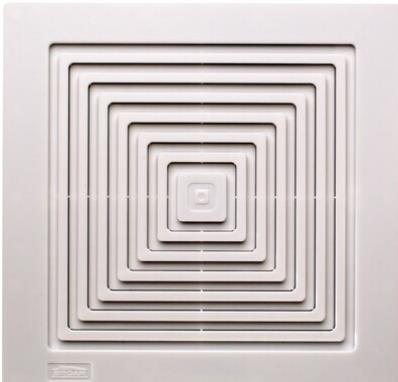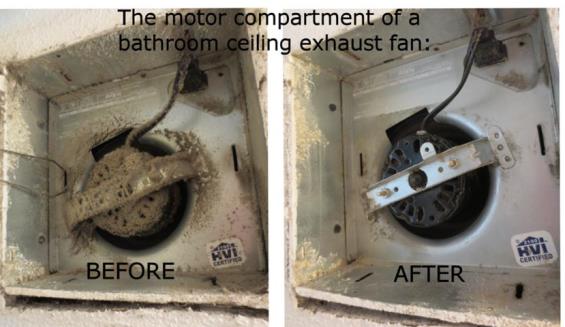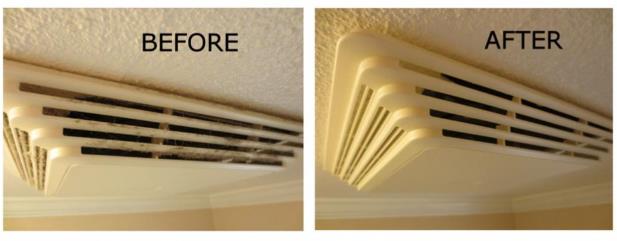BATHROOM EXHAUST FAN FIRES
Did you know bathroom exhaust fans are a common cause of household fires?
Your bathroom exhaust fan is like any other electrical appliance. And like other appliances, it can pose a fire risk if not properly taken care of. Stay safe and reduce that risk by following these tips on how to keep your bathroom ceiling fan well maintained.
Don’t leave fans on for an extended period of time!
Please remember that bathroom fans should only be used for brief periods of time, such as during a shower. Many people run them excessively or even forget they are on. Leaving the fan on for hours at a time can really put the unit at risk for trouble. Consider installing a timer-based switch that will turn the fan off automatically. Turn off all fans as soon as they have done the job.
Bathroom Ceiling Fan Checkup
 A visual inspection of your exhaust fan can offer a lot of critical details. Most of the time, details on the well-being of your fan are hiding in plain sight. Discoloration, odd sounds, the fan itself slow to start up, dusty build up — these are all clues that you’re going to want to look out for. Here’s some other key advice:
A visual inspection of your exhaust fan can offer a lot of critical details. Most of the time, details on the well-being of your fan are hiding in plain sight. Discoloration, odd sounds, the fan itself slow to start up, dusty build up — these are all clues that you’re going to want to look out for. Here’s some other key advice:
- Consider replacing older fans. Before you take on the task of cleaning your exhaust fan, take a look at the age and condition of the fan. Many are in use long after they should have been retired. If yours looks really old, it’s probably time to replace it. Hire a licensed electrician to replace the fan with a thermally insulated fan. Be on the lookout for warning signs like the ones below.
- Scraping sounds at startup. If your fan is making a lot of noise as it’s rotating, that can spell trouble for the motor. If that contact should halt the fan’s rotation altogether, it can cause themotor to overheat and lead to a fire.
- Signs of melting or burning. Becausethe fan is venting away air, it can bedifficult to smell fans in trouble. A mildburning smell or scent of ozone is a clueto pay attention to. Your fan may betelling you that bigger problems are onthe horizon. Look for melted wires andwire nuts, as issues like these are likelygoing to get worse and could spark a fireif left alone. If this is the case, get alicensed electrician to look for wiredamage and have them inspect theentire circuit.
Bathroom Exhaust Fan Maintenance
Keep your bathroom vent fan working well for years to come by checking it once in a while. You’re going to need to remove the cover to inspect it, so take a look at the owner’s manual for details on how the cover can be removed. Follow the manufacturer’s recommendations on cleaning the unit as well. Once the faceplate is off, here’s what you’ll need to do:
- Get rid of the dusty build up. The small slits on most exhaust vents can quickly become choked up with debris or blocked altogether when dirt collects over time. The good news is; this is an easy problem to solve.


- Wash and let dry. Wipe the dust away with a wet cloth and rinse the cloth in warm soapy water. Another option is to submerge the faceplate into warm soapy water. If you find any mold on the inside, put a little bleach into the water to keep it from returning quickly. Wipe down the interior of the fan housing with a rag as well.
- Clean the ducts. Often, dust and dirt collect on the ducts that channel the vented air outside, making it difficult for the fan to work efficiently. It can cause the fan to overheat, posing a fire risk. Pick up a flexible duct cleaning extension kit at your local hardware store and use it clean up those hard to reach areas. You may need to uninstall the fan to get into the ducting behind it. Again, hiring a licensed electrician is a good idea if you’re not familiar with how the fan’s installed.
- Use LED lightbulbs. Swap out incandescent light bulbs, if your fan uses them, with low-heat, energy saving LED light bulbs. These bulbs will decrease the electric load placed on the circuit and the exhaust fan.
- Manage buildup with canned air. In between thorough cleanings, you can keep the build-up to a minimum with a few bursts from canned air that’s typically used for cleaning electrical equipment. Be sure to turn the fan on before cleaning.
- Mark your calendar. Setup a meeting with your bathroom ceiling fan twice a year and clean thoroughly.



